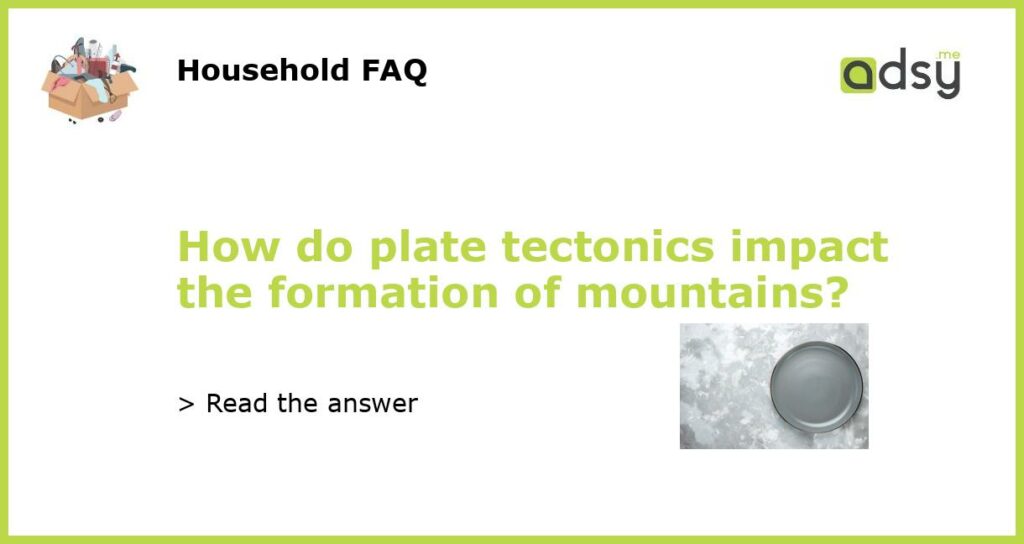Plate tectonics and mountain formation
Plate tectonics, a scientific theory that explains the Earth’s geology, plays a crucial role in the formation of mountains. This theory states that the Earth’s lithosphere is divided into several large plates that float on the semi-fluid asthenosphere beneath. These plates constantly move and interact with one another. When these plates collide, mountains can be formed.
Types of plate boundaries
There are three main types of plate boundaries: convergent, divergent, and transform boundaries. Each of these boundaries has unique characteristics that contribute to mountain formation.
Convergent plate boundaries
Convergent plate boundaries occur when two plates collide. There are three subtypes of convergent boundaries: oceanic-oceanic convergence, oceanic-continental convergence, and continental-continental convergence. Each of these subtypes can lead to the formation of mountains.
In oceanic-oceanic convergence, two oceanic plates collide, resulting in the formation of a subduction zone. One plate is forced beneath the other, creating a deep ocean trench. The subducting plate melts as it sinks into the mantle, forming magma. This magma then rises to the surface, resulting in volcanic activity and the formation of volcanic mountains.
In oceanic-continental convergence, an oceanic plate collides with a continental plate. The denser oceanic plate subducts beneath the less dense continental plate. As the oceanic plate sinks, it creates a subduction zone and volcanic activity similar to oceanic-oceanic convergence. The volcanic activity, combined with the collision and compression of the two plates, leads to the formation of mountain ranges.
In continental-continental convergence, two continental plates collide. Neither plate is dense enough to subduct, so instead, they collide and crumple, leading to the formation of fold mountains. This process involves intense compression and deformation, resulting in the uplift and folding of the Earth’s crust, ultimately forming high mountain ranges.
Divergent plate boundaries
Divergent plate boundaries occur when two plates move away from each other. This movement causes magma to rise from the mantle and fill the gap between the separating plates, creating new crust. As magma cools and solidifies, it forms a ridge or a chain of underwater mountains called a mid-ocean ridge. Over time, these ridges can emerge above sea level and form volcanic islands or mountain ranges.
Transform plate boundaries
Transform plate boundaries occur when two plates slide past each other horizontally. Unlike convergent and divergent boundaries, transform boundaries do not directly contribute to mountain formation. Instead, they can cause earthquakes as stress builds up along the boundary. However, the movement of transform boundaries can indirectly affect nearby mountain ranges by causing fault lines and other geological structures that can influence the distribution and formation of mountains.






